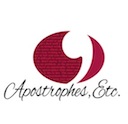It can be hard remember which of these two pairs of words means what. A compliment is an appreciative remark; something nice that you say about someone else without any need to do so. A complement is something that pairs with something else to make it whole or complete. While both of these nouns can also be used as verbs, complement is not as often encountered or required as a noun .
- At the end of the meeting, the client paid the team a compliment for finishing the project so quickly.
- At the end of the meeting, the client complimented the team for finishing the project so quickly.
- Some people believe that chips are a complement to any meal.
- Some people believe that chips complement any meal.
- In grammar, a complement is the word or group of words that completes the meaning of a sentence or other expression.
![]()

Complement can also be used to mean a full or complete group.
- The ship departed without a full complement of sailors.
- I have just about discussed the full complement of the parts of speech.
Both these words can also be used as adjectives, and this is perhaps where the greatest confusion is caused, because complimentary has an extra meaning, which doesn’t exist for the noun and verb forms of the word: that meaning is free, without charge.
- The team was happy to hear the client’s complimentary remarks. (meaning: appreciative, congratulatory)
- Everyone who attends the dinner will receive a complimentary gift. (meaning: free, bonus)
- There are unlikely to be many complimentary tickets to the Taylor Swift concert. (meaning: free, bonus)

If you’re wondering about the term complementary medicine, this is used to describe additional treatments to the ones used by medical doctors: complementary therapies are generally offered and practised by people who do not have a medical degree. The idea behind the term is that complementary therapies add to, or complete, the standard medical treatments. Complementary colours are ones that, if they are mixed together, will neutralise each other and form white. They will be opposite each other on a colour wheel: for example, purple and yellow.
- Acupuncture is a complementary therapy; it is used in addition to standard medical treatments for a number of illnesses.
- Using complementary colours can create a striking design.
- We are taught in school that the size of complementary angles add up to 90 degrees.

How can you remember these meanings? It’s tough: the best advice I can give is that a compliment is a nice thing to say and complimentary (meaning free) things are nice to receive; both nice and compliment have an i in them, whereas something that is complementary completes things – with es, no i.
I hope this complimentary post has complemented your knowledge of these words. If you have any compliments or other feedback, please post a comment.

If you have found this post interesting, you can find a full index to my other posts on the index page. To be notified when I post a new topic, follow me on Facebook! If you have any particular questions you’d like me to answer in future posts, just send me a message. I’m always interested to learn what people think, and how you came across this site, so please post a comment.
If you think you would be interested in either my complete grammar course or an individual customised online course (particularly suited for people who don’t live in Melbourne), just click your preferred option.